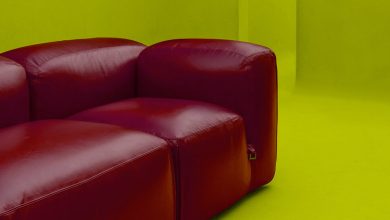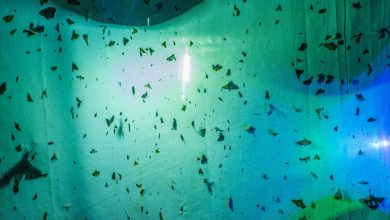How Rosé Became a Lifestyle

“I hate the word ‘trend,’” said Joey Wölffer, an owner of the Hamptons winery Wölffer Estate, known for its rosé. It is a surprising statement from someone who makes one of the most ubiquitous beverages in the Hamptons and beyond. But Ms. Wölffer has been at it for a while.
When Wölffer Estate started making rosé in the early 1990s, many wine snobs in this country still associated the pink variety with sweet, budget-priced offerings like white zinfandel “blush” wines, Ms. Wölffer said, considering them not much more elegant than a cheap wine cooler.
“Nobody was drinking it,” Ms. Wölffer, 40, said on a recent Monday afternoon, enjoying a lunch of curried chicken on the patio of the estate’s tasting room in Sagaponack, N.Y., gazing at the rows of budding grape vines that stretched lavishly toward the horizon. “Young people weren’t drinking it. Young people weren’t drinking wine.”
They are now. Wölffer Estate has ridden the rosé renaissance of the last 15 years, and also helped drive it. In 2014, according to the company, Wölffer sold 1,530 cases of its signature line, “Summer in a Bottle,” a crisp rosé in a clear bottle decorated with a whimsical explosion of wildflowers and butterflies.
Last year, the winery sold 69,000 cases of “Summer in a Bottle,” and this year is on pace to sell 73,000 cases, along with and 35,000 cases of a new rosé imported from France, “Summer in a Bottle Côtes de Provence.”
Wölffer’s rosés — the company now has eight varieties — have become a fixture at backyard parties and beach picnics, a symbol of languid days on Long Island’s South Fork. For the young summer-share crowd, rosé has become a stylish alternative to beer or hard seltzer.
The winery, too, has become a scene for its luxury-S.U.V. owning patrons and the many visitors that flock to the beach all summer. On weekend evenings, gaggles of clean-cut couples and incognito celebrities turn out in pastel shorts and floral-print sundresses to lounge on the grass behind the Wölffer Wine Stand on the south side of the property, sipping rosé while their children frolic to live music. In 2017, Alec and Hilaria Baldwin renewed their marriage vows on the Wolffer grounds.
“Rosé,” Ms. Wölffer said, “has become a lifestyle.”
Hobby Wine to Vineyard Estate
A fashion executive, Ms. Wölffer runs her own fashion label, Joey Wölffer Reworked, with a boutique in Sag Harbor, the town where she lives with her husband, Max Rohn (the chief executive of Wölffer), and their two daughters, age 6 and 4. (Ms. Wölffer owns and operates Wölffer Estate with her half brother, Marc Wölffer, who grew up in Germany and still lives in Europe.)
Her father, Christian Wölffer, who died in 2009, was a German-born venture capitalist who made his fortune in real estate. Her mother, Naomi Marks Wölffer, is a former jewelry designer for Harry Winston and an heiress of the Marks & Spencer retail fortune.
A competitive show jumper, Joey keeps three horses — two Dutch Warmbloods and a Selle Francais — in a 100-acre equestrian center on the 175-acre Wölffer grounds. She and her family frequently pop up in the event pages of Dan’s Papers, the Hamptons social bible, for her celebrity-dotted benefit dinners.
Ms. Wölffer knows her life appears to be a Town & Country spread come to life. “There is an element of luck to be born into this world, I’m fully aware,” she said.
That doesn’t mean she’s always comfortable. “I’m a personality that has super-high highs and super-low lows,” she said. A maximalist and a multitasker by nature, she speaks in a torrent of words and finds the idea of relaxation — even on a beach chair, magazine in hand — alien.
Meditation makes her anxious, she said. She prefers boxing. That day, she was a vision of patterns in a multicolored blouse of her own design, patched together from Indian block-print fabric and other recycled fabrics. Both wrists were a thicket of bracelets. At nearly six feet tall, with three-inch stacked heeled suede ankle boots, she was pushing her height toward W.N.B.A.-power forward territory.
“I’m at my best,” Ms. Wölffer said, “when I push past my limit.”
Part of her drive comes from her father, who had the vision for the winery and conjured it from a soggy potato field, planting his first vines in 1988, after moving the family from the Upper East Side.
“My father was a booming presence,” Ms. Wölffer said. “He would really command a room, and had a lot of power over people. But growing up with that as a girl, was challenging. He was very difficult, very tough. I think it goes back to his childhood.”
Born in Hamburg, Germany, in 1938, Christian Wölffer’s middle-class family lived in poverty during the war. “He always said, ‘You have no idea what it’s like to really struggle,’” Ms. Wölffer recalled. “But I was a very insecure child.”
A life in the family business was the last thing she expected. “I wanted to get as far away as possible,” she said.
After graduating from Vanderbilt University in 2004 with a degree in human and organizational development, Ms. Wölffer headed to London, where she landed a job as a designer for Meems Ltd., a jewelry company that was sold in chains like Topshop. Two years later, Ms. Wölffer returned to Manhattan and was working as trend director for Jones Group, a casual wear and accessories company, when her father died in a swimming accident on vacation in Brazil.
At first, she had no interest in a career in wine. “I didn’t want to live my dad’s dream,” she said. “I wanted to live my own.”
Ultimately, however, the family legacy proved too strong. In 2013, she and Marc Wölffer took over Wölffer Estate. They had one major asset: Roman Roth, Wölffer’s German-born winemaker, who had been there from the beginning, and had scored 90-plus scores from Wine Spectator for his high-end chardonnays and merlots.
But they faced significant obstacles. For starters, Marc Wölffer was 16 years older, and had grown up in Europe, so the half-siblings barely knew each other. Ms. Wölffer knew little about wine. Also, her father had treated the winery as a hobby, unconcerned that it had been running in the red for years. Ms. Wölffer and her brother, however, were approaching this as a career. They needed to turn a profit.
A Rosé Hotbed Miles From Manhattan
From the beginning, Christian Wölffer and Mr. Roth were committed to making rosé, believing that the East End terroir was perfect to produce an “elegant, fun and versatile rosé that would be perfect for cocktail parties out East,” Mr. Roth said.
Both sought to produce a crisp, dry rosé like those they knew from their travels in the Provence region of southern France, where rosé is an intrinsic part of the St. Tropez lifestyle — a vin de soif (“wine to quench thirst”) to be quaffed in the afternoon, or as a festive aperitif with a salade niçoise or a briny bouillabaisse.
In the United States, however, many wine aficionados had associated pink wine with fruity, mass-market Portuguese offerings like Mateus and Lancers, which rode high in the bell-bottoms era, or the “white zins” of the yuppie 1980s.
That started to change in the mid-2000s, as discerning consumers began to discover the drier, crisper rosés of Provence, with Château d’Esclans’ top-selling Whispering Angel leading he way. The era of so-called millennial champagne was born.
The Wölffers saw an opportunity to rebrand the Hamptons — a minor player in the Long Island wine region, compared with the North Fork — as a rosé hotbed. That meant rebranding the wines themselves, framing rosé as, essentially, a glass of liquid sunshine.
With Ms. Wölffer serving as chief brand officer, Wölffer rolled out a rosé cider, a festive alternative to hard seltzer for the summer-share crowd on the East End. In 2013, Wölffer followed with “Summer in a Bottle,” with its made-for-Instagram design and name that distilled the ethos of rosé into four words.
The concept took off, but success brought new competition. In 2018, Jon Bon Jovi and his son Jesse Bongiovi rolled out a French rosé of their own called Hampton Water.
So far, however, not much has slowed Wölffer’s momentum. Its eight rosés now account for 70 percent of its revenues, the company said.
“Seventy-thousand cases is just an extraordinary amount of wine for a small estate,” said Kristen Bieler, a senior editor at Wine Spectator, who oversees coverage of the rosé market. She credited Wölffer as “an early pioneer, committed to producing dry rosé in the mid-’90s, long before it was fashionable.”
“Their rosés,” she added, “have become summertime staples, synonymous with the Hamptons luxury lifestyle for wine drinkers far beyond the borders of these elite hamlets.”



